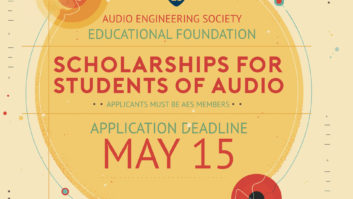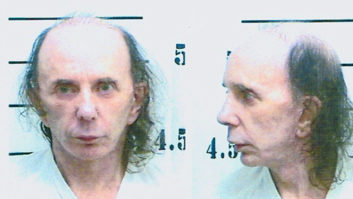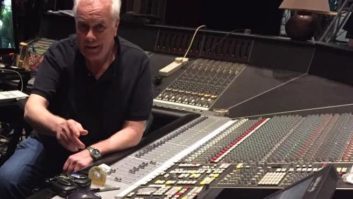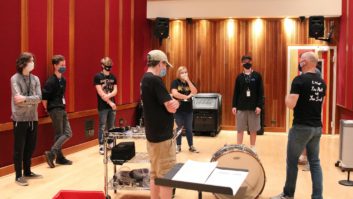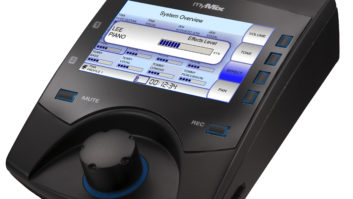Premiered on May 26, 2002, the HBO documentary In Memoriam: New York City, 9/11/01 recounts the events of that extraordinary day by intercutting interview material with then-Mayor Rudy Guiliani, and raw documentary footage culled from the millions of feet shot by news organizations and private individuals.
The producers, who prepared a music track based on recordings spanning several decades, decided that it would be simpler to re-record the entire score than attempt to license the original material. The New York Philharmonic was selected for the re-recording sessions, which were engineered by Larry Rock, currently in his fifth season as the Philharmonic’s audio director. Rock received a 1997 Grammy Award for his work on an RCA Victor Red Seal/BMG recording of the St. Louis Symphony Orchestra, conducted by Leonard Slatkin. (As we were going to press, Rock was nominated for an Emmy Award in Sound Mixing, and In Memoriam was nominated for five total, including Sound Editing. The Emmys are this month.) He records every Philharmonic performance, mixing them for weekly radio broadcasts, which go out live on WQXR in New York and are syndicated throughout the nation by WFMT in Chicago. Rock also culls the archives to prepare weekly broadcasts for evening drive-time listeners in the tri-state area.
Though the New York Philharmonic is based at Lincoln Center’s Avery Fisher Hall, the orchestra was traveling on September 11. “Needless to say, our flight was canceled and we didn’t get home until the next weekend,” says Rock. “Our Opening Night Gala programming was scrapped in favor of a performance of the Brahms Requiem. It was extremely moving, but also technically demanding, because it was going out live on TV and radio. I was paying attention to what was going on, but at the same time, I was lost in a fog of emotion. I remember that when the piece ended, there was no applause; the silence was awesome. Gradually, everyone got up and walked off the stage.”
Typically, Rock records the orchestra using an array of four omni mics. “Generally, I incorporate a pair of Neumann 130s — they have a slight rise in the high end that I like,” he says. “I also use a pair of Schoeps MK 2S mics as outriggers; of the four that I spread out, they’re the farthest left and right. I also use diffraction spheres on the Neumanns because the effect is reminiscent of the old Neumann M50 that had the diaphragm mounted in a sphere. It causes the mic to have a slightly directional quality at the high frequencies. The practical result is a little more focused sound. Not that it changes the response per se, but in the room, it makes them slightly directional, but only in the upper frequencies.
“I place these two omnis on a bar spaced about 70 centimeters [roughly 18 inches] wide. They act almost like an ORTF pair. The theory here, as many Mix readers know, is that you don’t want a coincident pair but a pair that is slightly spaced at approximately the same distance as your eardrums. For broadcasting, in particular, you want a stable center image.”
Rock uses as many as 16 microphones total, deploying various Neumann and Schoeps models as spot mics, and mixes on a Mackie analog 8-bus console. “I monitor on Martin Logan speakers, which I like a lot,” he says. “They’re a hybrid electrostatic speaker with a dynamic woofer. Speakers don’t have to be huge to have a good low end. These are about six feet tall and 16 inches wide.”
Because the HBO session was not a live concert, Rock was able to hang mics that he might not have otherwise used. “Neumann was kind enough to loan us a pair of their new M150 tube mics,” he recalls. “That’s the latest version of their vintage mic. Neumann came out with a transistor version of the old M50, the TLM 50, in the 1980s. The M150 tube is cleaner than the old M50s were and warmer than the TLM 50s.” Thanks to the carefully designed grille, the M150 had the directional characteristic that Rock could otherwise achieve only by putting diffraction spheres on the Neumann 130s.
Because the Philharmonic’s retiring music director, Kurt Masur, was not available for the HBO sessions, Rock found himself working again with conductor Leonard Slatkin. As Rock notes, a conductor’s style can change the way he records the orchestra. “Masur worked to get a very warm sound from the orchestra,” he says. “That meant that I didn’t have to work to avoid printing a harsh sound. Aggressive material, when played in an aggressive manner, calls for me to tone things down with subtle changes in the way I aim mics. In general, by the way, Masur raised the level of playing in the orchestra.”
Another factor that Rock had to consider was the notorious acoustics of Avery Fisher Hall. “The problem is that it has a large volume,” explains Rock. “A lot of sound goes out, and it doesn’t come back readily. The space is just a little too deep, affecting concert listeners more than those listening to a recording made there. There’s too much diffusion for the amount of reverberation. But it’s not a terrible hall — I’ve worked in much worse — it just doesn’t shine real well. The strings tend not to have enough surfaces that are close by to give the kind of reflections that would be desirable. But it does have a very solid stage box to support low frequencies, especially those coming from the back of the stage, which, unfortunately, is too rigid. Its lack of proper resonance results in a bit of a hard sound.”
Rock typically records the orchestra’s performances in stereo to two different digital formats. His stereo mix from the Mackie runs through a Benchmark AD2004 A/D converter and then to a Tascam DA-45 at 24-bit, and also through an Apogee UV22 that dithers the signal down to 16 bits to feed an HHB CD-R 850 CD burner. “I’m really careful about the CD media I use,” says Rock, who has been using Taiyo Yuden CD-R media. “The Mitsui media is also well-made. There is a trade-off, supposedly, between the media that yields the best data right away and what lasts the longest. We won’t be certain for generations.
“DAT is clearly a stopgap measure,” he continues. “Everyone knows that its reliability and longevity are questionable. However, the DA-45 runs very well. The next step up for us is the DA-78, which we bring in for important concerts, including the HBO tracks. My standard procedure when using the DA-78s is to create six tracks of surround components, although I’m not creating a finished surround mix, which we’re not capable of executing here. These are more like surround-ready tracks spread out across eight tracks. I’ll put the same stereo mix as I’m feeding to the other recorders onto the first pair of tracks, plus another six tracks consisting of left- and right-rear channel information and a pair of tracks containing material you’d want to steer in and around the middle channel, soloists in particular.
“On the HBO session, we used one DA-78 to record the stems, plus three more that we used to create a full multitrack mix, 24 tracks wide. We did this for two reasons: One, the critical nature of the project. We needed protection, just in case HBO wanted to remix something for balance reasons. Secondly, HBO plans on releasing a DVD of this show (with profits to aid the September 11 relief efforts) and they’ll need to tailor a surround mix for that production.”
Gary Eskow is a Mix contributing editor.

